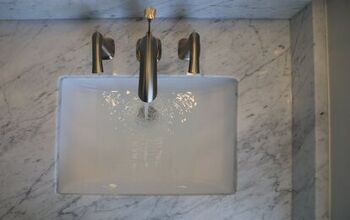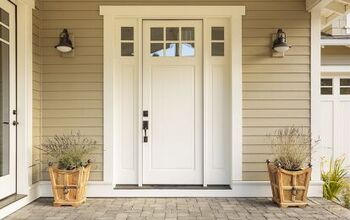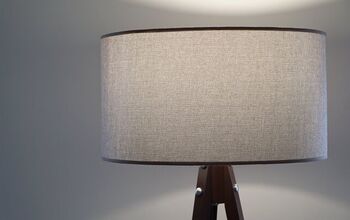Why Does The Clutter Keep Coming Back?

After decluttering your house, you often feel like you can breathe more easily and things are more peaceful. It’s like you hit a giant reset button. But if you’re not careful, that reset can quickly turn into more of a replay, with everything creeping back to how it was before.
Unfortunately, clutter tends to return if it is not dealt with properly. For example, you purge items without addressing why you collect stuff in the first place. When you free up space, you feel a need to fill it up again. Emotions play a big role in the clutter cycle, especially if you find temporary happiness through making impulse purchases.
Before you start going through closets and drawers and filling up donation boxes, there’s a little homework to do first. Don’t worry, you won’t get detention if you skip it. However, you also won’t get the uncluttered home you’re hoping for, because until you understand the assignment, clutter keeps coming back.
Six Reasons Why Clutter Comes Back
Decluttering your home can feel as if a great weight has been lifted off your shoulders. Sometimes, the clutter will creep back, until it becomes a problem again. Read on to discover why your home may become cluttered, even after you've conducted a major decluttering job.
1. Failing To Understand Why You Have Clutter
One of the primary reasons clutter keeps coming back is that you aren’t addressing the reasons for it. Think about it this way. What if you had a cold, but no matter how many times you kept taking medicine, resting, drinking plenty of fluids (you know the drill), you kept getting sick?
You’d likely go to your doctor and ask them to examine you. There must be some underlying reasons that keep your cold coming back time and time again, like chronic stress or issues with your immune system. To make a true difference, your doctor would pinpoint the cause and then help you create the proper treatment plan.
Another example could be a car that leaks oil. You could keep filling the oil tank, wasting oil, and putting in more effort to keep the tank full. Or you could address the root cause of the leak and repair it. It might take more time, effort, and money on the front end, but you’d save in the long run.
The same goes for tackling the clutter in your house. Understanding the reasons for having a cluttered home is vital if you don’t want the clutter to return. There are all sorts of reasons for having a lot of stuff. Some of the most common are:
- You collect many different things.
- You can’t say no to hand-me-downs, gifts, and heirlooms.
- You’re unhappy or feel like something is “missing,” so you fill the void with stuff.
- Clutter is a byproduct of half-finished projects, ideas, future DIYs, and other endeavors.
- You can’t resist an exciting curbside find or garage sale steal.
- You inherited someone else’s clutter, and you have no idea where to start, or grief gets in the way.
- You’re overwhelmed by clutter, so you just keep collecting stuff.
- You don’t have a clear system or method for organizing your belongings.
- You see potential in everything, figuring you might need it someday, so why toss it?
On top of these reasons, there are other contributing factors, such as having more storage space could lead to buying more objects. Or, if you’re super busy, you may feel as if you don't have the time necessary to deal with your clutter, so it continues to gather dust and multiply.
Identify why you have clutter so you can work on making necessary changes. For example, if you have a hard time saying no whenever someone tries to pass something along to you, you need to practice. Start telling them, “Thank you, but I’m trying to pare down my belongings.”
2. Unrealistic Systems Or Poor Organization
Sometimes, clutter comes back because you don’t have proper systems in place to organize your things. You don’t know where you put the screwdriver, for example, so you buy another one. It’s easier for you to purchase a few new holiday decorations than to drag out the bin you stashed all the way in the back of the garage after last Christmas.
It’s essential to organize after you declutter. You want everything to have a place and make sure things are accessible. Also, although inspiration from places like Pinterest, TikTok, and Instagram is helpful, it’s not a one-size-fits-all solution. You need to organize your home to fit your lifestyle and how you operate if you want the system to stick.
3. You Share The Space, but You Don’t Share The Same Opinion About Clutter
Living in a home with others pose extra challenges when it comes to keeping clutter out of the house. You might be ready to get rid of stuff, but if others aren’t, stuff will keep coming into the home. It’s important that everyone is on board with the decluttering process and shares a vision of how they want the house to look and feel.
4. You Don’t Have A Maintenance Plan To Manage Clutter
After decluttering, you need to impose some type of routine or maintenance plan to keep things at a manageable level. Getting rid of excess belongings isn’t a one-and-done deal. Things will always come into the house, from the random pair of shoes you buy to the junk mail collecting on the counter.
Regularly go through your home and conquer clutter in manageable chunks to keep it from becoming overwhelming. The ten-minute tidy is a great way to stay ahead of the mess.
5. Your Creativity And Resourcefulness Lead To Clutter
Making a DIY table from an old door, turning a broken chair into a quirky shelf, and using old tires as planters are all great ways to repurpose items. Reusing things has many benefits. For one, it limits the trash that ends up in landfills, and it can also save you money.
However, it only works if you actually follow through on your ideas and projects, and if the things you make are actually things you need and use. Otherwise, you’ll always collect potential projects and supplies, seeing art and useful items in every doodad and thing-a-ma-bob that comes your way.
Try to set rules (and follow them) regarding projects. For example, you can’t start a new task until you finish the current one. Also, it has to be something you already defined a place for, like a shoe rack for your closet or an umbrella rack for your entryway.
It’s also important to give yourself concrete time limits for projects, especially if you create items for resale. Have a clear timeline for when you must finish an item, list it for sale, etc. You also need a back-up plan for where you will take things that don’t sell within your specified time frame.
6. You Don’t Change Your Habits
Sometimes, clutter accumulates because of habits. You drop the mail on the kitchen counter every day, and it piles up over time. You kick off your shoes when you come home and leave them in a heap by the front door.
After reading a book, you leave it on the nightstand, eventually acquiring a stack of novels that’s taller than you. You love having a warm cup of tea at night as you watch your favorite show, but you neglect to put the mug in the sink before bed.
If you clean up, declutter, organize, and so on, but you don’t change these habits, the clutter comes back. It’s important to implement new habits that help you keep clutter at bay long-term. Don’t try to change everything at once. Instead, pick one thing and work on replacing it with a new habit, then work on another, etc.
For example, when you get home, remove your shoes and toss them in a basket instead of leaving them on the floor. When the basket gets full, put a few pairs of shoes away in the closet or wherever you keep them.
Understand How To Keep Clutter From Coming Back
Being aware of why clutter creeps back into your home is a big step to keeping it out of your house. Recognize why you have so much stuff, change daily habits, and create functional systems for storing items that work for you.
Discuss plans for clutter with anyone who lives in the home. It’s important to be on the same page with how you plan to handle new items that come into the house.
Likewise, have a solid plan for DIY projects and artistic endeavors. Finally, learn to enjoy the empty spaces in your home rather than give in to a need to fill every nook and cranny. Consequently, instead of filling the house with stuff, you’ll fill it with peace and serenity.
Related Guides:

Stacy Randall is a wife, mother, and freelance writer from NOLA that has always had a love for DIY projects, home organization, and making spaces beautiful. Together with her husband, she has been spending the last several years lovingly renovating her grandparent's former home, making it their own and learning a lot about life along the way.
More by Stacy Randall











![10 Best Electric Lawn Mowers - [2022 Reviews & Top Rated Models]](https://cdn-fastly.upgradedhome.com/media/2023/07/31/9070486/10-best-electric-lawn-mowers-2022-reviews-top-rated-models.jpg?size=350x220)

![The 10 Best Table Saws - [2022 Reviews & Buyer's Guide]](https://cdn-fastly.upgradedhome.com/media/2023/07/31/9070645/the-10-best-table-saws-2022-reviews-buyer-s-guide.jpg?size=350x220)













